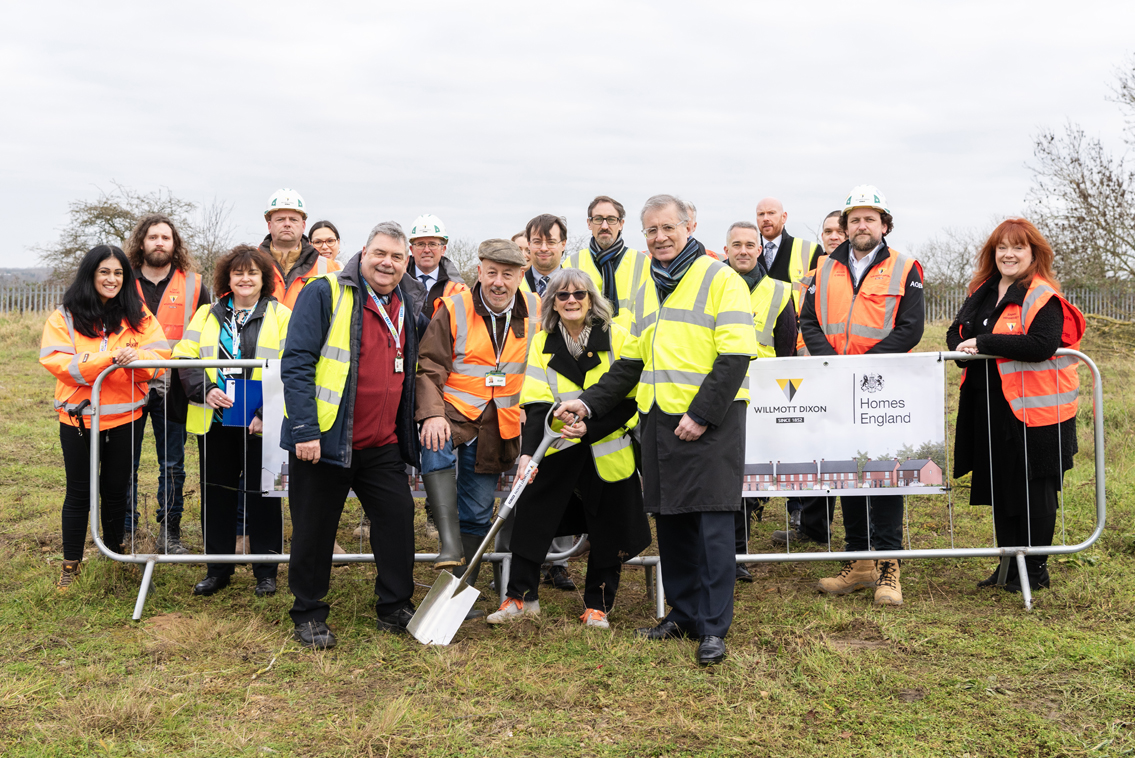 How can cash-strapped councils facing Section 114 still invest in place? With some councils across the UK facing tough times with their finances, David Atkinson, National Head of Land and Development at Willmott Dixon looks at options to help them continue investing in new homes.
How can cash-strapped councils facing Section 114 still invest in place? With some councils across the UK facing tough times with their finances, David Atkinson, National Head of Land and Development at Willmott Dixon looks at options to help them continue investing in new homes.
It’s striking that 12 out of the 14 councils that have issued section 114 notices since the Local Government Finance Act because law in 1988 did so after 2018. It underlines the huge challenges facing local authority finance, with those that have issued “bankruptcy” notices unlikely to be last. A survey from the Local Government Association found that one in five councils “think it is very or fairly likely that (they) will need to issue a section 114 notice this year or next due to a lack of funding to keep key services running.”
Currently local authorities spend most of their budget on schools, including special needs, social care and maintaining roads. A rise in these commitments, and a squeeze on budgets, has had real consequences.
Fears of more defaults are real. In fact, just over half of councils have warned they’re likely to issue a section 114 notice in the next five years. As it stands, just 4% of councils are confident in the viability of their finances in their present state.
There are plenty of challenges that don’t help; the impact on inflation has seen council’s real spending power drop 12% lower that it was a decade ago. National Living Wage contributions, particularly prevalent in the adult care sector, will cost councils £1.1bn in additional overheads in 2024.
How has this happened?
Why are so many councils expecting expenditure to exceed income? Councils typically receive funding via three streams — council tax, business rates and commercial income. Austerity cuts’, generally agreed to have started in the aftermath of the financial crisis in 2010, cut central government funding and grants significantly.
As a counter to this, government legislation was modified, freeing up councils to take on bigger, more speculative investments for commercial income. For some councils, this was a success — purchasing office blocks and similar forms of real estate provided and continues to provide additional income. For others however, it was the opposite. Hindsight is easy, however at the time many investments in retail, considered traditionally a safe bet, were flattened in terms of revenue by the economic recession, defaults and property not being let.
Councils rode out these bruising events by making cuts as necessary. As the need to cut became deeper, so the scope and impact of those cuts became more and more profound. Crucially, with increases in costs, many councils now see either no or just limited room for manoeuvre.

What can be done?
This situation does not mean important local authority housing development has to stop. By working in different ways with the private sector, there are innovative solutions to deliver an agenda for place creation.
For example, Willmott Dixon engages with many councils to get complex regeneration programmes off the ground. This can be through producing early-stage feasibility to start the process, completing work ordinarily done by officers who may lack the capacity.
One area where third parties can really add value is through strategic business planning and accessing grant funding for housing. A good partner can fill this gap, utilising teams of experts in local government to develop viable, market facing plans and access funding that unlocks major projects.
For example, in Rugby, we supported the Borough Council in developing their first council-built homes in a generation.
Knowing they needed more support and capacity, Rugby asked our team to accelerate the important pre-construction phase. We used our expertise in unlocking grant by assisting Rugby in making their first Homes England Affordable Homes Programme 2021-2026 grant application.
The result was that work has now started to build 100 affordable homes at Rugby’s Biart Place development. This collaboration proved decisive and showed what’s possible by utilising private sector capacity without compromising on control.
Similarly, collaboration was key with Rotherham Council, where we accelerated their plans for town centre renewal by building 171 homes across three sites. These homes were delivered for affordable rent, shared ownership and market sale.
Again, alongside the construction skills, our development team supported Rotherham by sharing knowledge and expertise on the most appropriate market sale typologies and specification, followed by a full wrap around sales and marketing service. This included setting up a brand called “The Trilogy Collection”, along with website and marketing materials, sales offices, as well as staffing the show room.
The impact was instant. Finished a few months ago, two of the three sites are now sold out, with over 120 families living in Rotherham town centre.
Don’t sell the family silver
Another tactic councils can use is asset sales. This is often a knee-jerk go-to in times of financial constraint and it can often see authorities forced to dispose of assets at sub-optimal rates. It’s also worth remembering that land sales are a one-time deal — councils don’t want to be seen to be ‘giving away the family silver’.
It is easy and understandable for councils facing financial duress and local pressure to defer much needed investment in place. However, the options are there to avoid this, and the resulting financial returns could provide important new sources of income to help balance the books in future financial years.
Header image: Willmott Dixon helped accelerate Rotherham Council’s plans for town centre renewal by building 130 homes across three sites.










